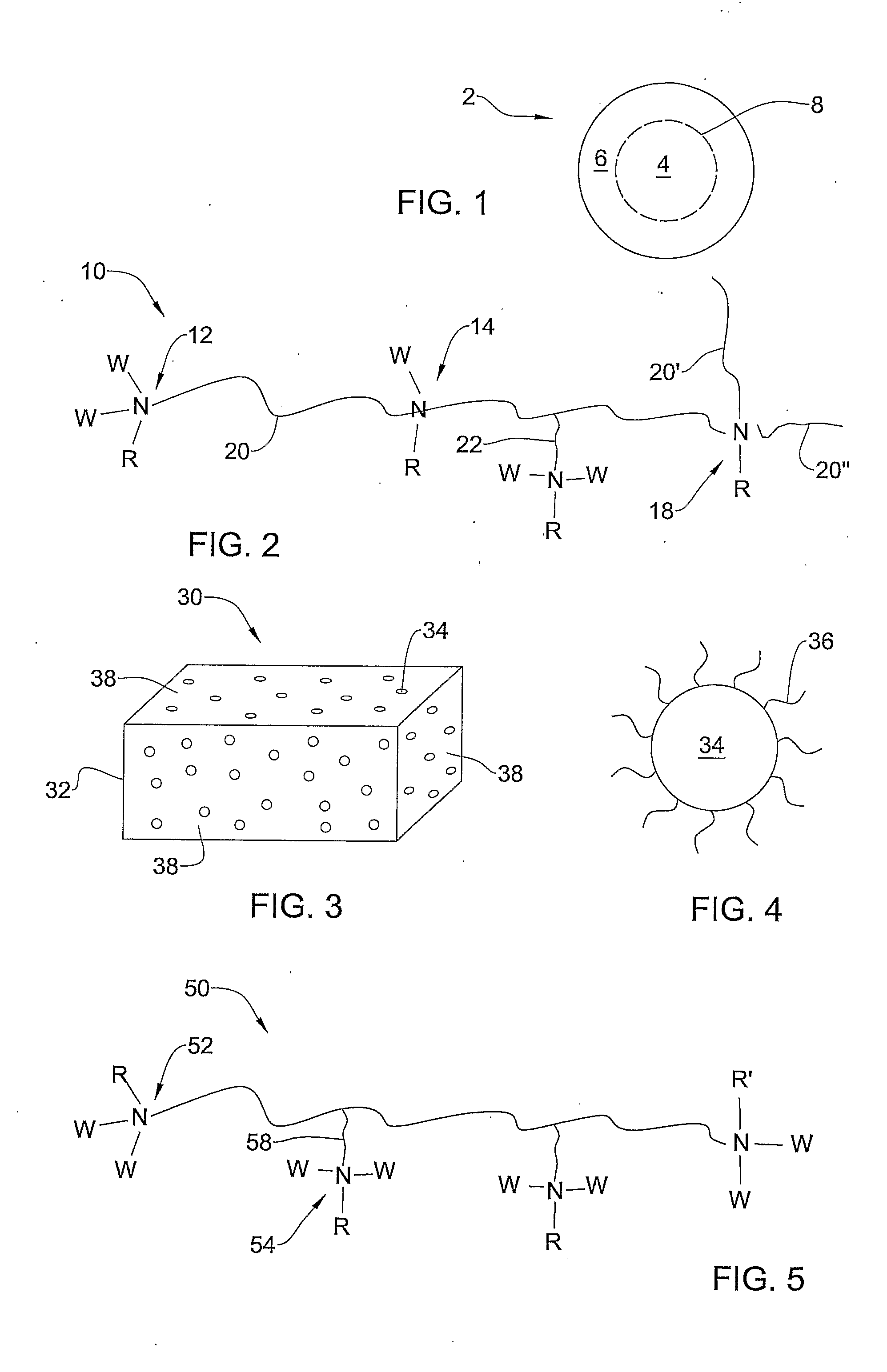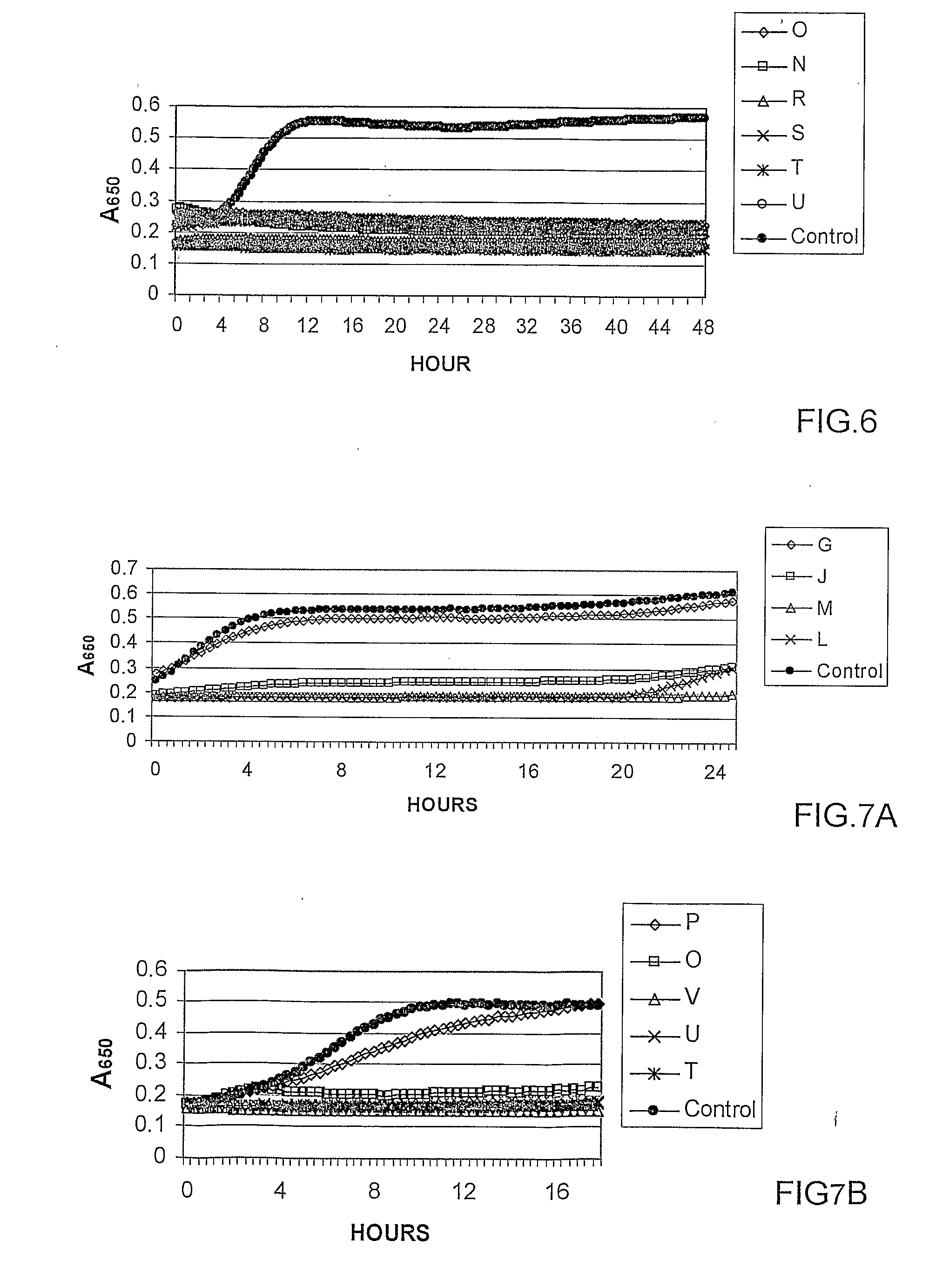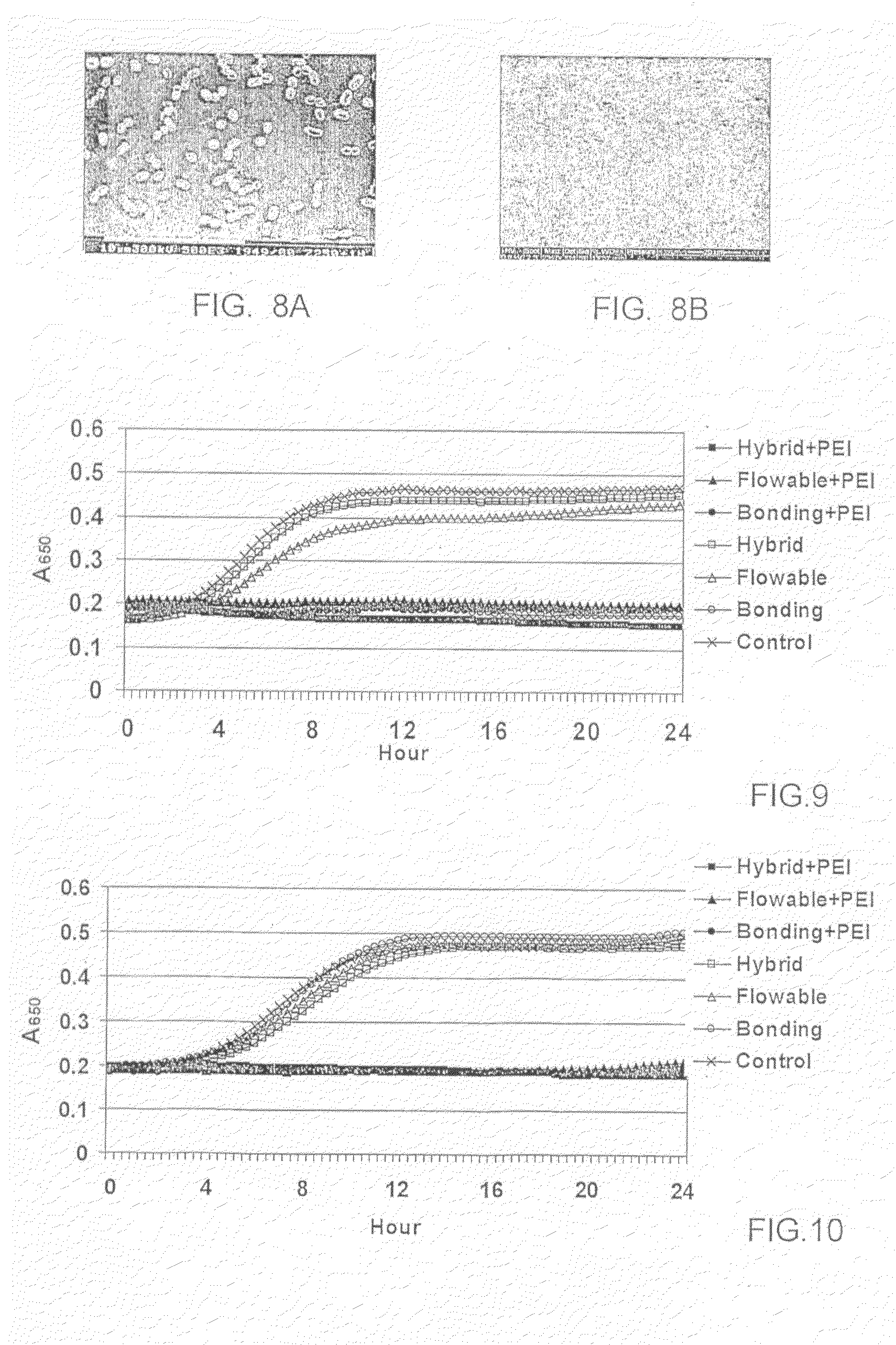Antimicrobial Nanoparticulate Additives Forming Non-Leachable Sustained Antimicrobial Polymeric Compositions
a technology of nanoparticulate additives and polymeric compositions, applied in the field of antimicrobally active particles, can solve the problems of deterioration of restoration materials, bacterial surface infections, and bladder infection, and achieve the effect of examining their antibacterial potency
- Summary
- Abstract
- Description
- Claims
- Application Information
AI Technical Summary
Benefits of technology
Problems solved by technology
Method used
Image
Examples
example 1
Effect of the Alkyl Chain on the Antimicrobial Activity of the Compound
[0098]Antibacterial activity of PEI is dependent on the quality and quantity of quaternary amines. Therefore it was decided in the course of the investigation leading to the present invention to increase both by alkylation with alkyl halides of various lengths followed by methylation in order to increase degree of amino group substitution. Alkylation agents impart hydrophobic nature to the hydrophilic PEI. This N-alkylation should make the polymer more hydrophobic and methylation also raises its positive charge by converting PEI's primary, secondary and tertiary amino groups into cationic quaternary amino groups. Studies on PEI nanostructured samples, modified with various alkylation agents based on alkyl bromides, were made to evaluate their antibacterial properties as a function of length alkyl group. PEI nanostructured materials were prepared via crosslinking with dibromopentane followed by alkylation with alk...
example 2
Effect of the Crosslinking on the Nanoparticle Stability Evaluated by Antibacterial Activity
[0111]To examine crosslinking contribution to the nanoparticle stability, crosslinked and non-crosslinked PEI nanoparticles were prepared. Non-crosslinked PEI nanostructured compounds were prepared as crosslinked PEI nanoparticles, including alkylation step with bromooctane followed by quaternization with methyl iodide, avoiding crosslinking step with dibromopentane. The purpose of this step was to evaluate nanoparticle formation and stability as a function of the crosslinking, estimate their bactericidal potency in the immediate contact with bacteria and during prolong period.
[0112]A. Alkylation of PEI with Bromooctane
[0113]Alkylation of PEI with bromooctane was followed as previously described in Example 1.
[0114]The degree of alkylation with bromooctane was determined by microanalysis and found to be 71%. 1H-NMR (CDCl3): 0.86 ppm (t, 3H, CH3 octane hydrogens), 1.24 ppm (m, 10H, —CH2—, octan...
example 3
Effect of the Crosslinking Degree on the Nanoparticle Size
[0119]The purpose of this step was to prepare PEI-based nanoparticles at various degrees of crosslinking, evaluate their size as a function of the degree of the crosslinking and examine their antibacterial potency.
[0120]A. Crosslinking of Polyethyleneimine (PEI) with Dibromopentane
[0121]Aqueous solution of PEI was lyophilized to dryness before use. Three samples of the PEI (18.65 g, 0.434 mol) of the 1.000.000-600.000 Da were dissolved in 186 ml of absolute ethanol. Dibromopentane was added at either 1:0.01, 1:0.05, 1:0.2 mole ratio (PEI monomer / dibromopantane). Crosslinking reaction was carried out at reflux conditions for 24 hours. Then excess of sodium hydroxide (1 g) dissolved in methanol was added to collect released HBr. Reaction was continued at the same conditions for additional 24 hours. After cooling to room temperature, the resulting residue was purified from NaBr by gravitational filtration. Filtrate was evaporate...
PUM
 Login to View More
Login to View More Abstract
Description
Claims
Application Information
 Login to View More
Login to View More - R&D
- Intellectual Property
- Life Sciences
- Materials
- Tech Scout
- Unparalleled Data Quality
- Higher Quality Content
- 60% Fewer Hallucinations
Browse by: Latest US Patents, China's latest patents, Technical Efficacy Thesaurus, Application Domain, Technology Topic, Popular Technical Reports.
© 2025 PatSnap. All rights reserved.Legal|Privacy policy|Modern Slavery Act Transparency Statement|Sitemap|About US| Contact US: help@patsnap.com



